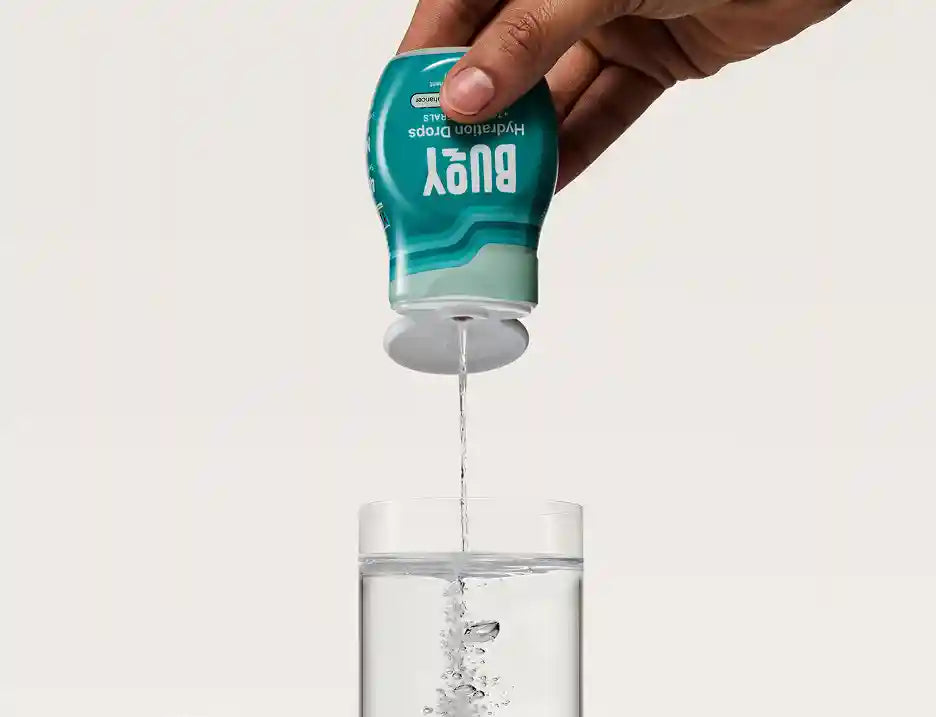
Fever and POTS: Understanding the Impact on Heart Rate
You wake up feeling feverish, and immediately your mind races: “How will this affect my POTS?” If you’re living with Postural Orthostatic Tachycardia Syndrome (POTS), this concern is all too familiar.
While managing POTS heart rate changes is already part of your daily routine, adding a fever to the mix can add another layer of complexity to symptom management. But there’s good news: understanding how fever affects your POTS symptoms can help you handle these challenging times with greater confidence.
Essential Takeaways:
- Does Fever Increase Heart Rate? When you have a fever, your heart rate naturally increases by 8-10 beats per minute for each degree of temperature elevation. For POTS patients, this normal response can be more pronounced, potentially leading to more significant symptoms and requiring careful management.
- Preparation is Key: Creating a fever response strategy with your healthcare provider helps maintain stability. Know your baseline heart rate, hydration needs, and warning signs to watch for when fever strikes. Having this plan ready can make managing POTS symptoms during illness more effective.
Whether you’re dealing with a common cold, flu, or any other fever-causing illness, we’ll walk you through what to expect and how to stabilize your POTS symptoms when your body temperature rises.
- How Fever Affects Heart Rate in POTS Patients
- Managing Heart Rate Changes During Fever
- Why Temperature Regulation is Challenging for POTS Patients During a Fever
- What to Do When Fever Worsens POTS Symptoms
- When to Seek Medical Attention for Fever with POTS
- Managing Fever and POTS Symptoms for a Balanced Recovery
How Fever Affects Heart Rate in POTS Patients
Understanding fever and heart rate POTS interactions is crucial. When you have a fever, your body increases its core temperature as part of its natural defense against infection.
This process typically raises heart rate by 8-10 beats per minute for each degree Fahrenheit of temperature elevation. For POTS patients, this normal physiological response can be particularly challenging.¹
Impact on POTS Patients
Fever in POTS patients can be especially challenging, as changes in both heart rate and blood pressure in POTS tend to be more pronounced. Unlike people without POTS, whose bodies can better compensate for these changes, POTS patients may experience:
- More significant heart rate increases than usual.
- Greater difficulty maintaining stable blood pressure.
- Intensified symptoms like dizziness and fatigue.
- Increased difficulty with temperature regulation.² ³
POTS patients should monitor their symptoms closely during fevers and stay in contact with their healthcare provider, as the combination of fever and POTS can significantly impact their well-being.
Managing Heart Rate Changes During Fever
When fever combines with POTS, it becomes crucial to manage your symptoms strategically. Follow these steps to help stabilize your heart rate:
1. Stay Well-Hydrated
Increase your fluid intake beyond your usual POTS hydration routine during a fever, focusing on electrolyte-rich beverages to maintain proper balance.
Monitor your hydration status through urine color, aiming for light, straw-colored throughout the day.³ ⁴ Keep in mind that certain foods, such as nutritional yeast, may affect urine color. Get expert tips for Staying Hydrated with POTS.
2. Practice Careful Position Changes
Moving slowly becomes even more important when you’re managing both fever and POTS. Take extra time transitioning from lying to standing, and continue using your compression garments as recommended by your doctor.³ ⁴
Remember that your body needs additional time to adjust to position changes while fighting an illness.
3. Monitor Your Vitals
Keep a closer eye on your vital signs during a fever. Since fever and blood pressure in POTS can be unpredictable, track both heart rate and blood pressure in POTS-related flares more frequently than usual, noting any unusual patterns or symptoms that develop.
Maintaining a detailed log can help you share important information with your healthcare provider and identify concerning trends early.³ ⁴
Why Temperature Regulation is Challenging for POTS Patients During a Fever
POTS affects the autonomic nervous system, which controls body temperature regulation. During a fever, this can lead to:
- More severe temperature fluctuations.
- Difficulty maintaining consistent body temperature.
- Increased sensitivity to both hot and cold.
- Greater difficulty reaching a comfortable temperature.² ³
By being aware of these challenges, you can take proactive steps to maintain your comfort and stability during illness. Work with your healthcare provider to develop strategies that address your specific temperature regulation needs, since everyone’s experience with POTS can vary.
Managing Temperature Challenges
The key to handling these challenges is creating a consistent environment and responding promptly to your body’s signals. Here’s how:
- Use cooling measures (e.g. cool compresses, light clothing) as needed.
- Maintain a consistent room temperature.
- Avoid extreme temperature changes.
- Consider using a fan for gentle air circulation.² ³
By implementing these strategies thoughtfully, you can better manage your comfort during illness. Remember that your experience is unique, and techniques that work well for you might need adjusting over time as you learn more about your body’s responses.

Tracking temperature helps POTS patients understand how fever affects heart rate changes and when to seek medical care.
What to Do When Fever Worsens POTS Symptoms
Fever can intensify common POTS symptoms, making your usual management strategies even more important. Here’s how to handle symptom flares during illness.
Prioritize Rest and Recovery
Your body needs extra rest when fighting both fever and POTS symptoms. Make horizontal rest periods your priority, and avoid any unnecessary physical activity.
This isn’t the time to push through symptoms—listen carefully to your body’s signals and give yourself permission to take it easy. Remember that proper rest now can help prevent longer recovery times later.² ³ ⁴
Focus on Smart Symptom Management
Continue taking your prescribed POTS medications unless your healthcare provider advises otherwise. When using fever-reducing medications, follow dosing instructions carefully and ensure they don’t interact with your regular medications.² ³ ⁴
Maintaining your recommended salt intake is crucial, even when you don’t feel well, as it helps support blood volume and circulation.
Create a Recovery-Friendly Environment
Set up a recovery-friendly space to support healing by keeping your sleeping area cool, organizing necessities, such as medications, water, and snacks, within easy reach, and using breathable bedding to prevent excess heat retention.² ³ ⁴
This preparation helps minimize unnecessary position changes while you recover. Learn more about managing POTS symptoms in our practical guide to Lifestyle Changes for Managing POTS.
When to Seek Medical Attention for Fever with POTS
While many fevers can be managed at home, certain symptoms warrant immediate medical attention.
Emergency Signs
Get immediate medical care if you have any of the following symptoms:
- Heart rate significantly above your usual POTS baseline
- Severe dizziness or fainting
- Chest pain or pressure
- Difficulty breathing
- Fever above 103°F (39.4°C)
- Severe dehydration symptoms³ ⁵
Don’t hesitate to seek emergency care if you experience these symptoms—quick action can prevent serious complications and help you recover faster.
Contact Your Healthcare Provider
Schedule an appointment if you experience:
- Fever lasting more than three days
- New or unusually severe symptoms
- Difficulty maintaining hydration
- Significant increase in POTS symptoms³ ⁵
Early intervention from your healthcare provider can help prevent symptom escalation and ensure you’re managing your condition effectively during illness.
Managing Fever and POTS Symptoms for a Balanced Recovery
Living with POTS means paying extra attention to your body’s signals, especially during illness. While fever can temporarily intensify your symptoms, remember that you have the tools and knowledge to navigate through these challenging times.
Stay connected with your healthcare team, monitor your symptoms carefully, and most importantly, give yourself permission to rest and recover at your own pace.
Learn More About Managing POTS
Want to learn more about managing POTS? Explore our comprehensive POTS resource guides to get expert tips to help manage your symptoms and thrive with this condition.

References:
- Heal, C., Harvey, A., Brown, S., Rowland, A. G. & Roland, D. (2022). The Association Between Temperature, Heart Rate, and Respiratory Rate in Children Aged Under 16 Years Attending Urgent and Emergency Care Settings. European Journal of Emergency Medicine: Official Journal of the European Society for Emergency Medicine, 29(6), 413–416. Retrieved from https://pmc.ncbi.nlm.nih.gov/articles/PMC9605188/
- POTS UK. (n.d.). Important Lifestyle Changes: Temperature Regulation. Retrieved from https://www.potsuk.org/managingpots/temperature-regulation-2/
- Ishizaki, Y., Yanagimoto, Y., Fujii, Y., Yamamoto, M. & Kaneko, K. (2022). Psychogenic Fever and Postural Tachycardia Syndrome Among School-Aged Children and Adolescents with Fever of Unknown Origin. BioPsychoSocial Medicine, 16(1), 9. Retrieved from https://pmc.ncbi.nlm.nih.gov/articles/PMC8962125/
- Cleveland Clinic. (2022). Postural Orthostatic Tachycardia Syndrome (POTS). Retrieved from https://my.clevelandclinic.org/health/diseases/16560-postural-orthostatic-tachycardia-syndrome-pots
- Mayo Clinic. (2022). Fever. Retrieved from https://www.mayoclinic.org/diseases-conditions/fever/symptoms-causes/syc-20352759





